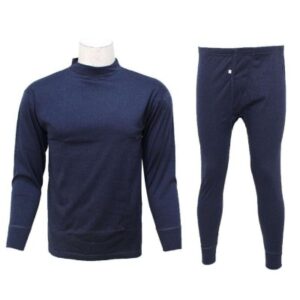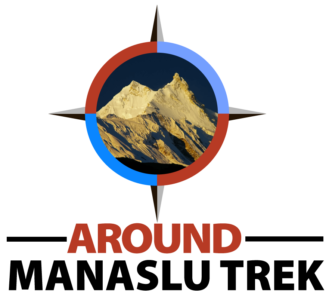Cho Oyo Expedition
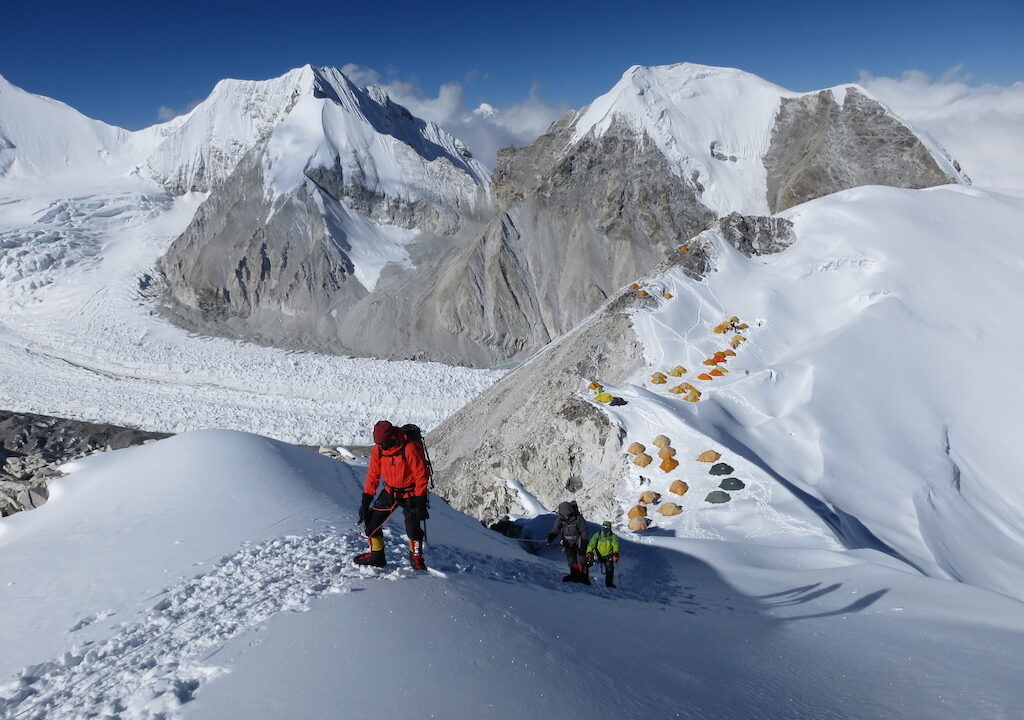
Trip Facts
- Destination Nepal
- Activity Expedition
- Duration 45 Days
- Trip Difficulty challenging
- Max. Altitude 8201
- Best Time March to May
- Start and End Kathmandu - Kathmandu
- Meals Breakfast / Lunch / Dinner
- Accommodation 5 star hotel in Kathmandu & Tea house/Camping
- Group Size 2 - 20
Trip Highlights
- Firsthand encounter with Tibetan culture.
- Take on the well-known "Yellow Band" and "ice cliff".
- Scale the world's sixth-highest peak, which stands at 8,201 meters.
- A thrilling and picturesque journey over Tibet's biggest and tallest plateau in the world.
- A thrilling land journey from Nepal to Tibet over gorgeous passes with breathtaking vistas.
Introduction
The Turquoise Goddess, also known as the Goddess of Turquoise, derives her name from the hues of the setting sun. It has a lovely connotation associated with the mountain. Perched on the boundary between Tibet and Nepal, the summit provides magnificent views, as its name suggests.
At 8,201 meters (26,906 feet), Cho Oyu is the sixth-highest peak in the world. Because of its straightforward approach and absence of external threats, the Cho Oyu Expedition is one of the easier 8,000-meter peaks to climb.
Climbers may get vistas of Everest, Lhotse, Ama Dablam, and hundreds of other Himalayan peaks from Cho Oyu, which is located in the center of the Tibetan and Nepalese Himalayas. Climbers participating in the Cho Oyu climbing expedition can experience old Tibetan culture.
Two routes are available for climbing: the conventional path, which follows the west ridge, and the southerly route, which approaches from the Nepal side. The peak is semi-technical, with several crevasses, a rock band, and short ice cliffs.
It is a relatively difficult task for a mountain of that height. With only Mount Everest higher, this places it as the world’s second most climbed eight-thousander. The majority of climbers’ attempts result in reaching Cho Oyu’s summit, which gives them further motivation. Among all the 8,000-meter summits, it has the greatest success rate.
A strong sense of endurance and physical fitness are needed to attempt to reach the peak of Cho Oyu. To be able to walk for several hours straight, you must be in good health and have sufficient fitness. Be ready to walk for up to eight hours straight on successive days if you plan to climb Cho Oyu. In terms of expected topography, Cho Oyu is largely covered with snow- and glacier-covered hillsides.
Best seasons for the Cho Oyo Expedition
When is the ideal time for a Cho Oyu adventure? Which season is the best time for the Cho Oyu expedition? Let’s consider each one.
Spring (March to May)
The spring months of March through May are the busiest times for traveling to Cho Oyu. This time of year is very popular for climbing Cho Oyu and other high-altitude Himalayan peaks. In the spring, this circuit makes for a beautiful stroll.
Hikers can enjoy the unparalleled splendor of the trail’s lush vegetation due to the moderate temperatures. The trail will be easier to follow, and the wind will be gentler than in previous seasons.
Summer/Monsoon (June to August)
The monsoon season, which arrives in June and lasts until August, limits the potential dates for ascents, and the weather is often less consistent, with daily highs and lows. This rainy season not only makes routes slippery and difficult to navigate, but it also reduces the time and opportunities to enjoy mountain views.
Fall / Autumn (September to November)
Autumn brings more consistent weather, although daily lows and daylight decrease. Autumn is the second-most popular time of year to climb Cho Oyu. When the skies clear following the monsoon, great views of the nearby peaks are frequently accessible.
Autumn’s clear, bright skies, comfortable daytime temperatures, cool evenings, minimal precipitation, and overall warmer weather all help maintain the ecosystem’s stability.
Winter (December to February)
Winter is the time to go if you enjoy heavy snowfall, bitterly cold temperatures, and closed tea shops. Mountains and walkways are covered with mounds of snow. If you are prepared for the cold and have appropriate gear such as gloves, thermal coats, thick socks, and extra layers of clothing, hikers can still go trekking during this season.
Cho Oyo Expedition Difficulty
For climbers hoping to reach the top of the world’s highest peaks, Cho Oyu is sometimes seen as a suitable starting mountain because it is one of the more approachable 8,000-meter summits. Yet prior climbing experience and technical proficiency are still prerequisites.
But one cannot minimize the risks involved in climbing at such high altitudes. You must be a strong, determined, and physically fit high-altitude climber capable of completing stages that last anywhere from 6 to 8 hours on average each day, with summit stages lasting 12 hours or longer (including ascent and descent).
To prevent altitude sickness and adapt to the high altitude, acclimatization is necessary. Your journey will be successful if you prepare physically and bring bottled oxygen for higher altitude climbs. The trek is unquestionably rewarding, but it calls for arduous walking and stamina. Not only will you require mental tenacity, but physical endurance as well.
At higher elevations, oxygen deprivation may cause you to feel sleepy and sluggish. Another way to exhaust yourself is to climb for a few hours. Those are perhaps not the best moments to be motivated. It’s crucial to take regular pauses and engage in constructive self-talk as a result.
Outline Itinerary
Day 01: Arrival In Kathmandu & Transfer to the Hotel.
Day 02: Tibet Visa Issue and Expedition briefing.
Day 03: Drive from Kathmandu to Timure.
Day 04: Cross the border of Nepal and Drive to Kerung (1,962m).
Day 05: Drive from Kerung height to Tingri.
Day 06: Acclimatization day in Old Thingri.
Day 07: Drive from Old Thingri to Cho Oyu Chinese Basecamp.
Day 08-10: 3 additional Nights Stay at Cho Oyu Chinese Basecamp.
Day 11: Trek from Cho Oyu Basecamp to Intermediate Camp.
Day 12: Ascent from Intermediate basecamp to Advance Basecamp (5,700m).
Day 13 – 37: Climbing Period (Adv. Basecamp – Summit (8,201m) – Adv.Basecamp).
Day 38: Drop down to Cho Oyu Basecamp from Adv. Basecamp.
Day 39: Drive back from Cho Oyu Basecamp to Thingri.
Day 40: Drive from Thingri to Kerung.
Day 41: Drive to Kathmandu after crossing the border (spend the night at a hotel).
Day 42: A day of leisure in Kathmandu.
Day 43: Proceed to the international airport for your last exit.
Alternative Treks & Expeditions Around Cho Oyu
If you’re drawn to the Cho Oyu Expedition (8,188m) but seeking a different challenge or perspective, there are some exceptional alternatives—whether you’re looking for a technical climb, a trekking adventure, or both. These options offer unforgettable experiences, high-altitude views, and varying levels of difficulty.
- Mt. Everest Expedition – 60 Days: Tackle the world’s highest peak for the ultimate climbing challenge and an experience like no other.
- Ama Dablam Expedition – 35 Days: Known for its beauty and technicality, this expedition provides a challenging ascent with dramatic views of Everest.
- Everest Three High Passes Trek – 20 Days: Push your limits with this rugged trek that takes you over three high-altitude passes, providing breathtaking views.
Detailed Itinerary
-
Day 01: Arrival Kathmandu, pick up to hotel - 1,300m
Altitude: 1300mMeals: BreakfastAccommodation: 5 star hotel in kathmandu -
Day 02: Kathmandu Day Sightseeing - 1,300m
Altitude: 1300mMeals: BreakfastAccommodation: 5 star hotel in kathmandu -
Day 03: Kathmandu Trek and expedition briefing days 1,300m
Altitude: 1300mMeals: BreakfastAccommodation: 5 star hotel in Kathmandu -
Day 04: Fly from Kathmandu to Lukla 2,810m - 30 min trek to Phakding 2,610m - 03 hrs
Altitude: 2610mMeals: Breakfast / lunch / DinnerAccommodation: Tea house -
Day 05: Trek to Namche bazar - 06 hrs
Altitude: 3450mMeals: Breakfast / lunch / DinnerAccommodation: Tea house -
Day 06: Rest day Namche bazar 3,450m hike to Everest view point hotel 3,900m - 05 hrs
Altitude: 2610mMeals: Breakfast / lunch / DinnerAccommodation: Tea house -
Day 07:
Altitude: 3450mMeals: Breakfast / lunch / DinnerAccommodation: Tea house -
Day 08 : Trek to Thame 3,850m - 05 hrs
Altitude: 3800mMeals: Breakfast / lunch / DinnerAccommodation: Tea house -
Day 09: Trek to Lunged 4,600m - 05 hrs
Altitude: 4600mMeals: Breakfast / lunch / DinnerAccommodation: Tea house -
Day 10: Trek to Gokyo lake 4,800m vai Renjola Pass 5364m - 08 hrs
Altitude: 4800mMeals: Breakfast / lunch / DinnerAccommodation: Tea house -
Day 11: Rest day in Gokyo 4,800m
Altitude: 4800mMeals: Breakfast / lunch / DinnerAccommodation: Tea house -
Day 12: Trek to Cho oy Base Camp 5,200m - 08 hrs
Altitude: 5200mMeals: Breakfast / lunch / DinnerAccommodation: Camping -
Day 13 to Day 40 : Cho Oyo summit time
Altitude: 5300m to 8000m+Meals: Breakfast / lunch / DinnerAccommodation: Camping -
Day 41: Trek to Gokyo 4,800m - 05 hrs
Altitude: 4800mMeals: Breakfast / lunch / DinnerAccommodation: Tea house -
Day 42: Trek to Dole 4,200m - 05 hrs
Altitude: 4200mMeals: Breakfast / lunch / DinnerAccommodation: Tea house -
Day 43: Trek to Namche 3,450m
Altitude: 3450mMeals: Breakfast / lunch / DinnerAccommodation: Tea house -
Day 44: Rest day in Namche - 3,450m
Altitude: 3400mMeals: Breakfast / lunch / DinnerAccommodation: Tea house -
Day 45: Trek to Lukla 2,810m - 08 hrs
Altitude: 2800mMeals: Breakfast / lunch / DinnerAccommodation: Tea house -
Day 46: Fly from Lukla to Kathmandu - 1,300m
Altitude: 1300mMeals: Breakfast / lunch / DinnerAccommodation: 5 star hotel in kathmandu -
Day 47: Rest day Kathmandu - 1,300m
Altitude: 1300mMeals: Breakfast / lunch / DinnerAccommodation: 5 star hotel in kathmandu -
Day 48: Kathmandu - 1,300m
Altitude: 1300mMeals: BreakfastAccommodation: 5 star hotel in kathmandu -
Day 49: Departure from Kathmandu airport - 1,300m
Altitude: 1300mMeals: Breakfast
What's included
- Arrival & Departure: Pick and drop facility-Airport/Hotel/Airport
- Accommodation: 5 nights stay at hotel in Kathmandu on Bed & Breakfast Basis-Double Room
- Welcome dinner: One Welcome Dinner in tourist standard restaurant in Kathmandu with Office’s Staffs
- Transportation: All required Transportation from Kathmandu/Lasha/Kathmandu for all Staffs and Members
- Permit Expedition Royalty and permit of Chinese Government (CMA / TMA) to climb Mt. Cho You
- Food & Lodging: 3 meals a day in Trekking & at Basecamp for Members & Staffs
- Porters: Porters up to & back from BC
- Oxygen: O2 cylinder: 2 oxygen (O2) for each Member and 1 oxygen bottle for each High- altitude Sherpa. Extra oxygen will be stored at Basecamp for emergencies
- Mask & Regulator: 1 Set of top Out mask for each member and high-altitude Sherpa
- Warm Farewell Dinner at a standard restaurant with Staff
What's not included
- International airfare to and from Kathmandu.
- Nepal Visa Charges
- Lunch & Dinner in Kathmandu
- Extra nights’ accommodation in Kathmandu. In case of early arrival or late departure, early return from the expedition (due to any reason) than the scheduled itinerary
- Insurance: Travel and High-Altitude Insurance / Accident / Medical / emergency evacuation
- Sherpa summit Bonus: Mandatory – Minimum USD 1,500
- Tips: Please calculate some tips for Basecamp staffs and porters
- The full set of Member's personal climbing equipment & clothing
- Rescue Evacuation: Emergency rescue evacuation cost, if needed and all other expenses of personal nature
- Any other item not listed in the "Price Includes" section.
Trekking Gears
To ensure a safe and comfortable trek in the Himalayan region, it is highly recommended to bring the appropriate equipment and gear to cope with the cold temperatures. The following is a list of essential equipment and gear, which can be purchased either in the Thamel market or brought from your home country:
Baggage
- 70-100 liters Duffle bag
For trekking and expeditions, a duffel bag is essential to pack all kinds of trekking equipment. Duffel bags come in various sizes, ranging from 60 liters to 100 liters. There are different brands available, such as The North Face, Sonam, Sherpa, Rab, and Everest Hikes. You can purchase these bags both online and offline in your homeland or in Kathmandu, particularly in Thamel's trekking shops. The cost varies depending on the brand, ranging from $15 to $100.
- Water proof day pack 30-40 liters
For hiking and trekking, you can choose from various brands of day bags. We recommend a 30 to 45-liter waterproof, strong, and good-quality day bag. Prices range from $40 to $200, depending on the brand and quality. You can purchase it in your homeland or buy it at the Thamel market (a trekking shop). Typically, this bag is used for day hiking and carries toiletries, emergency medical supplies, snacks, a water bottle, a jacket, warm shirts/t-shirts, a hat, trekking poles, and gloves.
- Pancho / Raincoat
Rain, wind, and snow are common in trekking areas. Typically, to avoid rain, we use a poncho, which also helps keep our body, clothes, and day pack dry. The cost of a raincoat is $10 to $50, depending on the quality, and it can be found in Thamel (a trekking shop). Alternatively, if possible, you can bring one from your own source.
- Power Bank / Trekking Solar
In the Himalayas, a trekking area, electricity is limited due to a small hydro power station. Sometimes, the electricity may not work, and often solar panels are used in most places. If the day is not sunny, then solar panels may not work. In that case, we can use our own backup to charge electronic devices. The quality makes the price vary from $50 up to $150. You can buy it in a Kathmandu trekking shop, or you can bring it on your own.
- Water Filter
During mountain treks, it is essential to stay hydrated by drinking either hot or cold water. The mountain water is robust and rich in minerals. Having a water filter machine allows you to filter this water. This is not only environmentally friendly but also cost-effective, as plastic bottled water can be expensive. The price range for water filters is $50 to $100, depending on the brand. You can purchase one in your own country or buy it at a Thamel trekking shop.
- Sleeping bag (comfort rated _20)
Normally, we use a sleeping bag during camping trekking and teahouse trekking. In teahouses, we are provided with blankets, but during the busy season, the blankets may not be sufficient. That's why we highly recommend owning a sleeping bag. Sleeping bags come in different types, ranging from -5 degrees to -30 degrees, and they vary in price. If you choose to buy a local Nepali product, the cost may not be expensive, ranging from Rs 5000 to Rs 20000. However, if you prefer a brand like The North Face, Sonam, Sherpa, or RAV, the cost can range from $200 to $1000. You can purchase them online or offline.
In Nepal, you have the option to rent or buy a sleeping bag. If you opt for a trekking package, the organizer will arrange sleeping bags based on different trekking areas.
- Head torch
During our Himalaya trekking, we ventured into remote areas where electricity and lighting systems were scarce, even in teahouses and high passes such as Thorang Pass, Larkey Pass, and the three high passes. In these places, especially during nighttime trips to the toilet or while crossing high passes, a headlight is essential. Headlights come in different types, including a normal one, one with a battery, or another with an electric source, ranging in cost from $10 to $50. You can purchase them online or offline, either from trekking shops in Thamel or in your home country.
- Water bottles 1 lit 2
During Himalayan trekking, it is advisable to carry two types of bottles: a 1-liter small thermos for hot water, tea, or coffee, and another 1-liter bottle for regular drinking water. The prices for these bottles range from $7 to $50. You can purchase them at Thamel trekking shops or in your home country. In Nepal, these bottles are available both online and offline.
- Sun glass (100% up protection)
During Himalayan hiking and trekking, it is essential to have sunglasses that provide protection against dust, wind, snow, cold, and heat. Different weather conditions require different types of sunglasses. We highly recommend reputable brands for sunglasses, with prices ranging from $10 to 200%. These sunglasses are readily available both online and offline. You can conveniently purchase them from trekking shops in Kathmandu Thamel or from retailers in your own country.
Clothing Essential
- Water proof jacket
During Himalaya hiking and trekking, where you may encounter rain, wind, cold, heat, dust, and snow, it is essential to invest in a high-quality waterproof jacket for protection. Various brands offer reliable options, such as The North Face, Sherpa, Sonam, Black Diamond, and RAB, with prices ranging from $100 to $500. These jackets are available for purchase both online and offline. You can find them at The Kathmandu Thamel trekking shop or in stores in your own country.
- Warm down jacket
During the trekking, we need a down jacket for cold places. We highly recommend a local or international brand depending on your budget. The cost will start from $5 and can go up to $1000. The recommended brands are "The North Face, Sonam, Black Diamond, Sherpa," which you can buy from your home country or in Kathmandu Thamel trekking shops. They are available both online and offline.
- Warm jumper
When reaching the teahouses during Himalayan treks, it is advisable to change into warmer clothes. We highly recommend bringing a jumper, and there are both local and international brands available, depending on your budget. Prices start from $30 to $120. If you already have one, that's fine; otherwise, you can purchase it in Nepal from the Thamel market, both online and offline.
- Trekking trousers
During Himalaya trekking, it is essential to have waterproof trousers to protect against rain, wind, dust, cold, and snow. We highly recommend choosing a brand based on your budget, with prices ranging from $20 to $150. Some notable trekking trouser brands include "The North Face," "Sonam," "Black Diamond," and "RAB." These trousers can be purchased both online and offline. If you already have them, you can bring them along; otherwise, you can purchase them at the Nepal Thamel Market.
- Base layer shirts
Normally, during Himalayan trekking, we use base layer shirts to protect ourselves from wind, dust, sun, and rain while hiking. There are both local and international brands available, with costs ranging from $20 to $120. You can purchase them either online or offline. If you already have one, you can bring it with you; otherwise, you can buy it at a trekking shop in Nepal.
During Himalayan trekking, the trekking areas can be extremely cold. We highly recommend purchasing a set of thermal clothing. There are both local and international brands available, such as The North Face, Sonam, Sherpa, Black Diamond, Kathmandu, and Everest. The cost can range from $50 to $250, and you can find these sets both online and offline. If you already have a set, you can use that; otherwise, we recommend buying one in Nepal, specifically at the Thamel market.
- Sunhat/warm hat/beanie
During Himalayan trekking and hiking, it is advisable to wear a sun hat to protect yourself from the sun. Additionally, when feeling cold, you can use your own woolen hat. We highly recommend purchasing either local or international brands, with prices starting from $5 and going up to $25. You can find these hats in the Thamel market in Nepal.
- Scarfs
During Himalayas trekking, it is essential to protect your neck, ears, mouth, and nose. We highly recommend purchasing different types of scarves, which are available in Nepal Thamel trekking shops. Prices start from $3 and go up to $25.
- Hiking boots
During Himalayan hiking and trekking, the most crucial equipment is footwear, particularly trekking boots. These boots are essential for safeguarding your ankles, ensuring safe walking, and being physically and mentally prepared for the trek. We highly recommend purchasing internationally recognized waterproof shoe brands such as Salomon, Hoka, Lowa, and Marmot. The cost typically starts from $150 and can go up to $400. You can find these brands in both Europe and Asia, including the Kathmandu Thamel market.
- Trekking socks / liner sock/heavy mountaineering socks
During Himalaya hiking and trekking, it is essential to have different types of socks depending on your budget. We highly recommend investing in trekking socks, with prices ranging from $3 to $30. There are both local and international brands available, and you can purchase them in Kathmandu's Thamel market.
- Sun protection / Lip Gaurd
During Himalayan hiking and trekking, we encounter various weather conditions such as sun, snow, cold, and dust, which can dry out the skin and lips. In such situations, it is essential to use protection, especially if you have sun allergy. We highly recommend purchasing lip balm and sunscreen, with costs ranging from $1 to $30. These products can be bought at trekking shops in Thamel, Kathmandu.
- Wash bag toiletries
During Himalayan hiking and trekking, we consistently rely on nature for various needs. For long toilet breaks, it is essential to carry toilet paper. Whether at tea houses or during the trek, having a good quality toilet paper is crucial. We highly recommend purchasing it from Thamel trekking shops, where the cost ranges from $1 to $2.
- Antibacterial hand wash
During Himalayan hiking and trekking, where access to washing towels or hot water is limited, it is recommended to purchase wet paper. The cost starts from $2 and can go up to $8 at medical shops in Thamel.
- Travel towel
During Himalayan hiking and trekking, the hotels are not luxurious; they are based on local standards. It is advisable to carry both a large and a small towel for drying the face and body. These items can be purchased at trekking shops in Thamel, with prices ranging from $2 to $20.
- Small pad lock to lock your bag
While hiking and trekking in the Himalayas, our duffel bag is carried by the porter. It is advisable to secure all your equipment inside the bag with a lock. We highly recommend purchasing a small lock, with costs ranging from $1 to $5, which can be found in Kathmandu's trekking shops.
- Medical Kits
During Himalayas hiking and trekking, most of the time, we are in remote areas and need to carry a basic medical kit with us. The emergency primary medicines we should have depend on our needs. You can buy them at a medical shop in the Thamel market. The basic first aid kit should include antiseptic cream, throat lozenges, diarrhea treatment (like loperamide), altitude sickness medication (such as acetazolamide), painkillers, insect repellent, plasters, blister treatment, insect repellent, and rehydration salts like Dioralite. Additionally, it's advisable to carry glucose tablets and multi-vitamin tablets.
- Trekking pole / Sleeping bag liner / Travel clothes / Camera / Pen knife
Normally, when getting ready for Himalayan hiking and trekking, both physically and mentally, it's essential to have trekking poles. They provide support for another leg, and there are various types available. We highly recommend investing in a good quality pole.
Inside your sleeping bag, a liner is necessary to keep warm. Before and after trekking, comfortable city clothes are essential. You can use your old ones or opt to buy new ones depending on your preference.
During the trek, capturing different angles and views with a good camera is crucial. You can use your existing one or invest in a new camera based on your budget.
In case of emergencies or for general use during the trek, it's advisable to have a Swiss small knife. You can purchase all these items at Thamel trekking shops.
What Not To Pack?
- Jewelry and valuables things, Heavy zoom lenses for your camera, Too many cotton clothes/ more than one pair of jeans, Bulky towels
During Himalayan tours, including activities such as hiking, trekking, peak climbing, and expeditions, we strongly advise against bringing items such as jewelry, gold, excessive cash, large cameras, too many cotton clothes, thick towels, etc.
Climbing Gear
- Climbing boots
- Climbing jacket and paint set
- Ice Axe
- Climbing Crampons set
- Climbing Rob
- Expedition day bag
- Harness set 6
- Climbing Glove
- Climbing torch light
- Climbing Sleeping bag
- Climbing tend
- Climbing water proof matrix
- Climbing cooking pot and small gas with stop
- Oxygen cylinder
- mitts or jumars
- Climbing trekking pole
- pee botal
- Climbing tea cup ,spoon and fork
- Climbing helmet
FAQs of Cho Oyo Expedition
-
1. What level of fitness and skills do I need for Cho Oyu?
You don’t have to be an elite athlete, but solid stamina and a determined mindset are essential. You’ll be trekking and climbing for hours each day at high altitude, which takes a physical and mental toll. Endurance, patience, and previous experience with high-altitude trekking or mountaineering will really help. -
2. Will I be sharing accommodation with other climbers?
Yes, but only in some sections. In Tibet, you’ll stay in comfortable hotels and guesthouses with twin-sharing rooms. Once at base camp, you’ll have your own personal tent for privacy. Higher up, at Camp 1 to Camp 3, climbers typically share tents with one partner for warmth and logistics. -
3. Is a permit required to climb Cho Oyu?
Absolutely. For climbs from the Tibetan side, you need a permit from the Tibet Mountaineering Association (TMA). If you're approaching from Nepal, it’s managed by the Nepal Mountaineering Association (NMA). Don’t worry — RP Adventures handles all the paperwork and logistics for your permit. -
4. How long does it take to reach the summit of Cho Oyu?
It varies slightly depending on weather, route conditions, and your personal pace — but most expeditions take 6 to 8 weeks from base camp to summit and back. This includes rest days, acclimatization, and summit attempts. -
5. Can I climb Cho Oyu without a guide?
Technically yes, but it’s strongly discouraged. Climbing Cho Oyu solo can be extremely risky due to the altitude, weather, and glacier terrain. Having an experienced guide or Sherpa not only improves your safety but significantly increases your chances of summiting. -
6. Is it possible to climb Cho Oyu without using oxygen?
It is — but it’s not for everyone. While some elite climbers have reached the summit without supplemental oxygen, most choose to use it above 7,000 meters. It makes breathing easier, boosts your energy, and improves safety on summit day. -
7. What is Cho Oyu and why is it so popular among 8000-meter peaks?
Cho Oyu is the sixth-highest mountain in the world at 8,188 meters. Its gentler terrain and lower objective hazards make it one of the most accessible and safest 8000-meter peaks — a top choice for first-time high-altitude climbers. -
8. Where exactly is Cho Oyu located?
Cho Oyu sits right on the Nepal-Tibet (China) border, northwest of Mount Everest, in the Mahalangur Himalayas. -
9. What’s the typical duration of the expedition?
Most Cho Oyu expeditions last between 38 to 45 days, including travel, acclimatization, and summit attempts. -
10. Which route does RP Adventures follow?
We climb via the Tibetan (northwest) side through the Nangpa La pass, a non-technical but demanding route that offers a safer ascent profile. -
11. Is Cho Oyu a good first 8000er?
Yes. Compared to other 8000m peaks, Cho Oyu is more forgiving in terms of difficulty and logistics, making it an excellent introduction to extreme altitude. -
12. When is the ideal time to attempt the climb?
Spring (April–May) and autumn (September–October) offer the best climbing conditions with more stable weather windows. -
13. Will I need to pass through Kathmandu?
Yes. Our journey starts in Kathmandu for orientation, visa processing, and preparation before continuing to Tibet via Lhasa or border crossings. -
14. How high is Advanced Base Camp (ABC)?
ABC is located at around 5,700 meters (18,700 feet). This is where climbers launch their acclimatization rotations and summit push. -
15. How many camps are set up above ABC?
Typically, there are three camps above Advanced Base Camp: Camp 1 at 6,400 meters, Camp 2 at 7,100 meters, and Camp 3 at 7,500 meters. -
16. How technical is the climb?
While Cho Oyu is considered one of the less technical 8000ers, climbers still need to navigate fixed ropes, glaciers, and steep snow slopes. -
17. How many oxygen bottles do I need?
Most climbers use 2–4 bottles. We supply high-quality oxygen systems, regulators, and masks for safety and comfort. -
18. What should I focus on in training?
Prioritize endurance activities like hiking, cycling, and stair climbing. Combine this with strength training and, if possible, altitude exposure or simulation. -
19. How do you deal with altitude sickness on the climb?
We follow a slow ascent schedule with rest and acclimatization days. Our guides monitor everyone for symptoms and carry medications and oxygen as a backup. -
20. What kind of meals will be available?
You'll get a mix of local Tibetan/Nepali food and international dishes, carefully planned to keep you fueled at altitude. We cater to dietary restrictions if notified in advance. -
21. Where will I sleep during the expedition?
You’ll stay in hotels in Kathmandu and Lhasa, then tents at base camps. At high camps, we provide durable mountaineering tents suited for harsh weather. -
22. Can I stay connected during the expedition?
At base camp, we use satellite phones and sometimes data via satellite modems. Don’t expect mobile reception beyond that. -
23. What gear should I bring?
We provide a full gear checklist upon booking. Expect to bring layered clothing, down gear, mountaineering boots, crampons, and climbing tools. -
24. Will I be climbing with a Sherpa?
Yes. Each climber is assigned an experienced Sherpa for one-on-one summit support and safety assistance. -
25. What risks should I be aware of?
Altitude sickness, avalanches, crevasses, and unpredictable weather are real risks — which we mitigate with careful planning and experienced guides. -
26. What’s included in the expedition cost?
Permits, logistics, transport, oxygen, food, guides, support staff, and standard accommodations are all covered. -
27.What’s not included in the package?
International flights, personal climbing gear, tips, insurance, and emergency evacuations are not included. -
28. Is insurance mandatory?
Yes. You’ll need coverage that includes high-altitude trekking/climbing, evacuation, trip cancellation, and medical treatment. -
29. How is emergency evacuation handled?
Depending on the location, we can arrange evacuation by vehicle or helicopter, in coordination with your insurance provider. -
30. Can I climb Cho Oyu without Sherpa support?
For safety reasons, RP Adventures requires all clients to climb with a Sherpa guide. It’s a non-negotiable part of our risk management. -
31. What if bad weather prevents a summit?
We’ll make every effort to wait out poor conditions, but your safety comes first. If needed, we may cancel or postpone summit attempts. -
32. How big are the climbing groups?
We limit groups to 4–12 climbers to ensure personalized support, smoother logistics, and better safety. -
33. Can I join solo?
Definitely. Solo travelers can join fixed-departure groups and will be matched with a guide and climbing partners. -
34. Do you follow an acclimatization rotation system?
Yes. Multiple rotations to higher camps help prepare your body for the final summit push. -
35. What’s the summit success rate?
While it varies by season, Cho Oyu generally has one of the highest success rates among 8000m peaks — often around 70–80%. -
36. Is tipping expected?
Yes. Tipping is customary and much appreciated. We’ll give you suggested tipping guidelines at the end of the expedition. -
37. What documents do I need?
You’ll need a valid passport (with at least 6 months' validity), recent passport photos, medical clearance, and a completed registration form. -
38. How do I reserve my spot with RP Adventures?
Easy — reach out through our website, email, or WhatsApp. We’ll send you a booking form and deposit details. -
39. Can I do a warm-up climb before Cho Oyu?
Yes, we offer pre-expedition training climbs and trekking peaks in Nepal to get you ready for the altitude and terrain. -
40. What if I need to leave early?
Early descent is possible, and we’ll help coordinate your transport. Additional fees may apply depending on the changes in logistics. -
41. Why choose RP Adventures for Cho Oyu?
We specialize in high-altitude expeditions with a personal touch — from expert Sherpa support to meticulous planning and caring service, we’ve got your back all the way to the top.
Trip You May Like
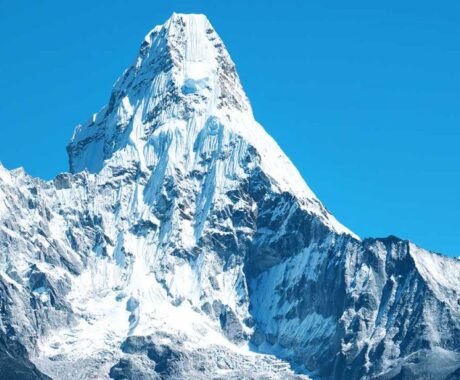
Ama Dablam Expedition
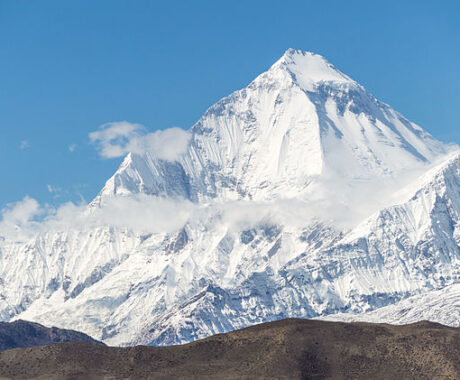
Mt. Dhaulagiri Expedition
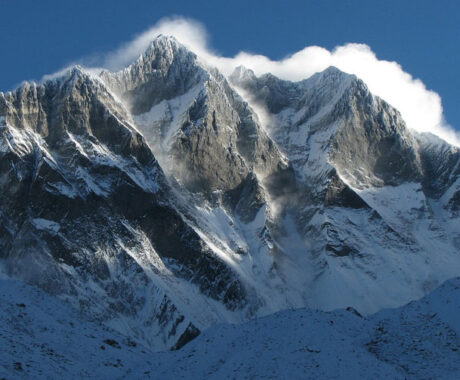
Mt Lhotse Expedition


